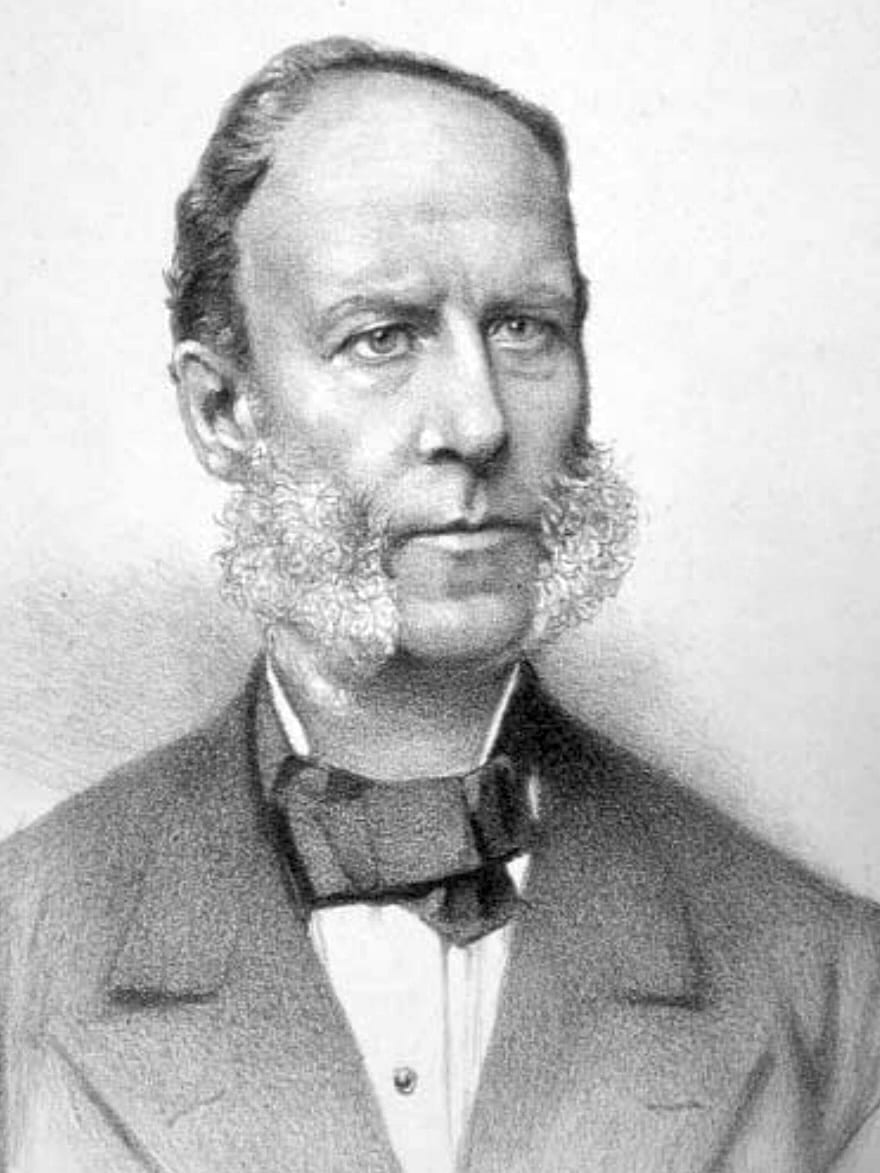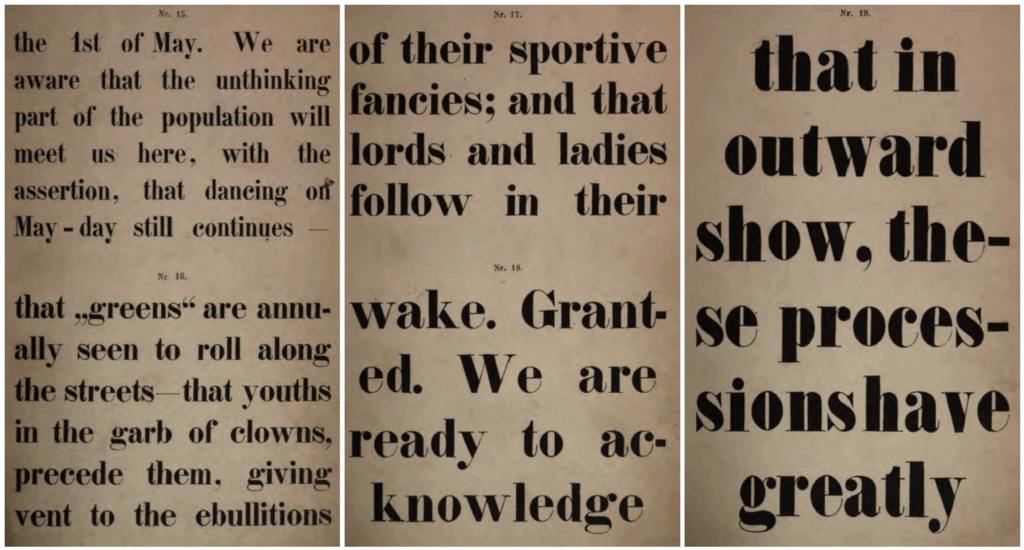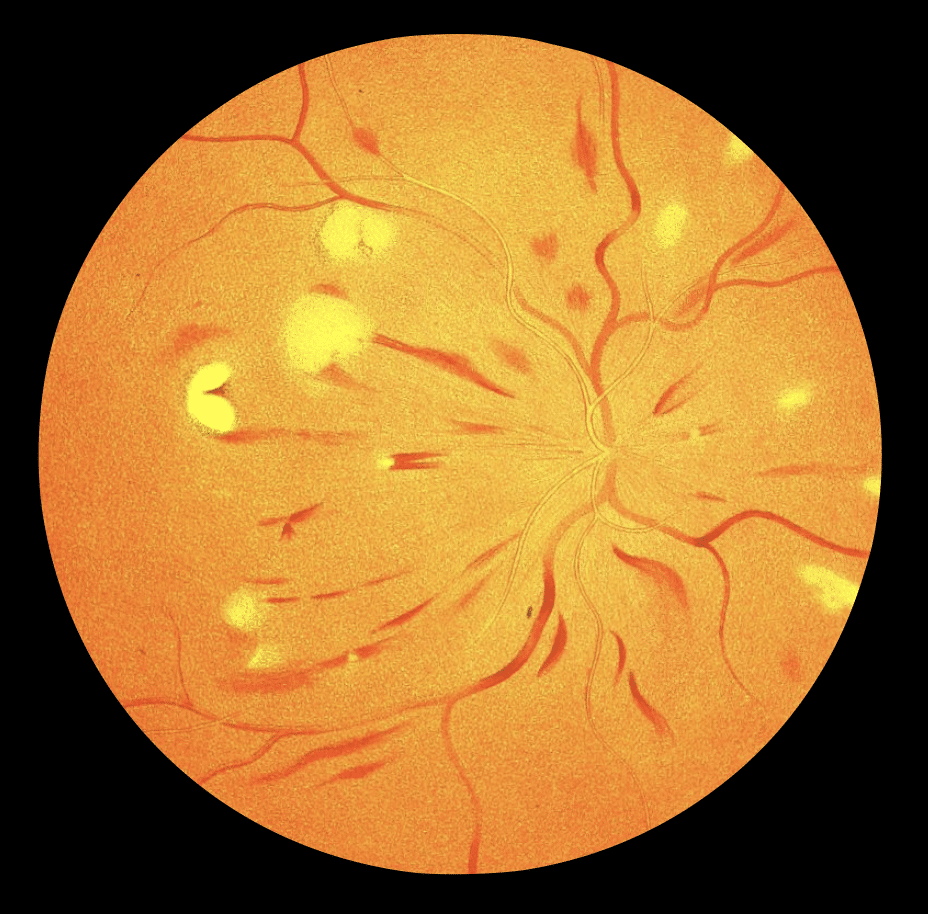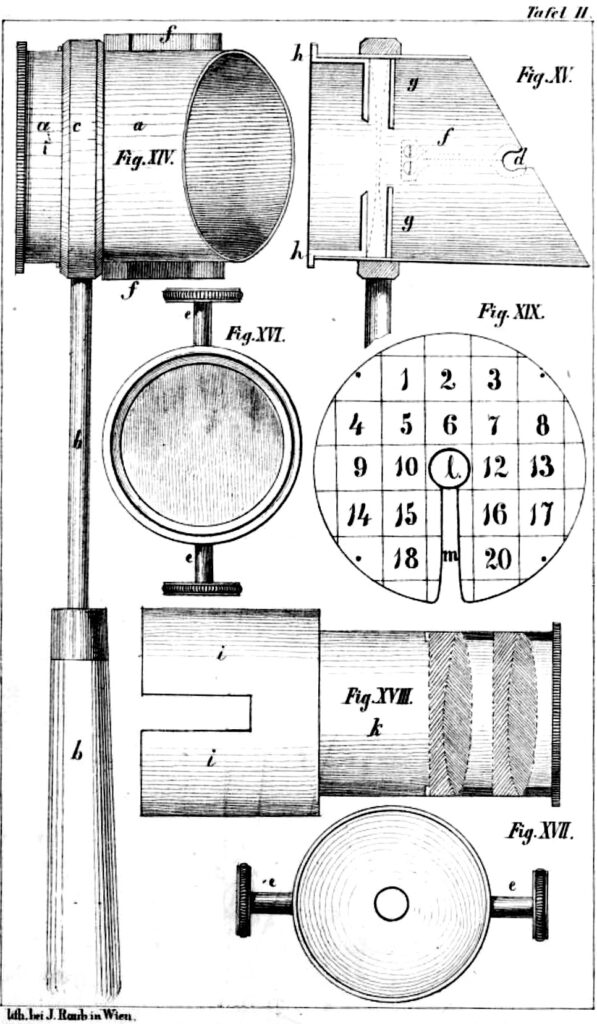Eduard Jaeger

Eduard Jaeger Ritter von Jaxtthal (1818-1884) was an Austrian ophthalmologist
Jaeger’s contributions shaped clinical eye care during the mid-19th century. Born in Vienna into a dynasty of ophthalmologists, he trained at the Josephinum, graduating in 1844, and soon established himself as an innovative surgeon and diagnostician.
Jaeger was among the earliest adopters of Helmholtz’s ophthalmoscope and rapidly advanced its practical application. He championed and perfected the upright image method, constructed his own ophthalmoscope incorporating Helmholtz’s and Ruete’s designs, and created detailed chromolithographic atlases of the ocular fundus. His Ophthalmoskopischer Hand-Atlas (1869) remained unsurpassed for decades and introduced pathological insights that became cornerstones of ophthalmology.
He was also a pioneer in visual acuity testing. In 1854, Jaeger published his Schrift-Scalen (Test-Types), the first standardized near-vision charts, which became the global benchmark for decades and survive today as “Jaeger notation.” His commitment to realism in vision testing—using continuous text to simulate actual reading—sparked a lasting debate with Snellen and Donders, who advocated optotypes for distance testing.
Jaeger made the first clinical observation of diabetic retinopathy in 1856, describing macular changes through direct ophthalmoscopy. His work extended to refractive error measurement, glaucoma, and ocular anatomy. Despite being overlooked for the Vienna professorship in 1853, he eventually attained the chair at the newly established II. University Eye Clinic in 1883, shortly before his death.
Biographical Timeline
- 1818 – Born June 25 in Vienna, Austria; son of Friedrich Jaeger von Jaxtthal (1784–1871), a renowned ophthalmologist, and grandson of Georg Joseph Beer (1763–1821).
- 1844 – Graduated from the Josephinum (Vienna Medical-Surgical Academy) with a dissertation on cataract surgery Ueber die Behandlung des grauen Staares
- 1845 – Published early writings on cataract surgery and ophthalmological observations.
- 1851 – Adopted Helmholtz’s new ophthalmoscope soon after its introduction; began refining the instrument and technique.
- 1854 – Introduced Jaeger’s Test-Types (Schrift-Scalen) for near vision; printed by the Imperial Staatsdruckerei in Vienna. These became the first international standard for reading vision tests.
- 1855 – Published Ergebnisse der Untersuchung des menschlichen Auges mit dem Augenspiegel and created some of the first detailed illustrations of the ocular fundus.
- 1856 – First to describe diabetic macular changes using direct ophthalmoscopy: “roundish or oval, yellowish spots and extravasations” in the retina.
- 1857 – Represented Austria at the first International Congress of Ophthalmology (Brussels), alongside Ignaz Gülz.
- 1861 – Published work on the optics of the eye (emmetropia, myopia, hyperopia, accommodation).
- 1869 – Published Ophthalmoskopischer Hand-Atlas, one of the 19th century’s most influential ophthalmoscopy atlases.
- 1883 – Appointed Professor of Ophthalmology at the new II. University Eye Clinic in Vienna, but his tenure was short-lived due to declining health.
- 1884 – Died July 5 in Vienna, aged 66. Buried at Penzing Cemetery; honored with a medallion and street name in Vienna.
Medical Eponyms
Jaeger Ophthalmoscope (1854)
The ophthalmoscope, introduced by Hermann von Helmholtz in 1851, revolutionized ophthalmology by enabling direct visualization of the retina. The original Helmholtz design produced an inverted image of the fundus, which was technically accurate but cumbersome for clinical interpretation.
Jaeger was among the first clinicians to adopt the instrument. In 1854 he applied practical modifications including:
- Constructing a combined ophthalmoscope, incorporating Helmholtz’s mirror system with Ruete’s adjustments, producing a versatile and user-friendly instrument.
- Developed upright image ophthalmoscopy, improving orientation for clinicians and facilitating fundus drawing.
- Introduced graduated focusing mechanisms, improving accuracy in estimating refractive errors, and laid groundwork for the concept of objective refraction.
Jaeger applied his ophthalmoscope (aka Ophthalmoscope de Jaeger or Jaeger Augenspiegel) extensively in research. He published the pioneering atlas of ocular pathology Ophthalmoskopischer Hand-Atlas in 1869 which featured some of the earliest detailed chromolithographs of the human fundus.
Jaeger’s Test-Types (Schrift-Scalen), 1857
Eduard Jaeger introduced his Schrift-Scalen (test types) in 1857 as the first standardized near-vision test. Printed by the Imperial and Royal State Printing House (Staatsdruckerei) in Vienna, the booklet contained multiple paragraphs in different fonts and sizes, ranging from No. 1 (smallest) to No. 20+ (largest). Texts were drawn from European literature in German, French, and Latin, reflecting Jaeger’s intent to simulate real-world reading rather than isolated symbols.
Schrift-Scalen provide the physician with a practical means to estimate reading vision in a way true to daily life, using ordinary print and connected sentences rather than detached letters or meaningless characters.

Jaeger’s innovation coincided with the emergence of ophthalmoscopy and systematic visual function testing. His charts rapidly spread across Europe, adopted in ten official editions, and became the global standard for near vision well into the 20th century.
- Established a functional approach to vision assessment.
- Persisted as “Jaeger notation” (J1, J2, etc.), though modern copies lack the original font and size calibration—a point repeatedly criticized in the literature.
- Inspired decades of debate with Snellen and Donders, who argued for standardized optotypes and angular equivalence to allow quantification of visual acuity.
Jaeger refused to express his text sizes in angular or metric units, emphasizing realism over geometric precision. This clashed with Donders and Snellen, who advocated for standardized optotypes calibrated in arc minutes using the Snellen chart
While modern “Jaeger notation” (J1–J24) survives, most current cards lack original style or size consistency, rendering them non-comparable across editions.
Key Medical Contributions
First Description of Diabetic Retinopathy (1855)
Eduard Jaeger’s report, published in Beiträge zur Pathologie des Auges (1855), described a 22-year-old gardener with advanced diabetes and progressive bilateral vision loss. Using the newly developed direct ophthalmoscope, Jaeger meticulously documented the retinal changes and included a lithographic plate. His observation became the first recorded case of diabetic retinopathy, later validated by Theodor Leber in 1875 as a landmark in ophthalmology.
In the region of this anomalous colouring of the optic fundus there are to be perceived a considerable number of apparently uniformly distributed blood-red flecks, some punctate, some striate or otherwise shaped… Between the flecks… numerous irregular, rounded, light-yellow spots whose brightness makes them very obvious.
Jaeger linked these findings to diabetes, a claim strongly disputed by Albrecht von Graefe, who argued no causal link existed. This controversy delayed recognition of diabetic retinopathy as a distinct entity until Edward Nettleship’s histological proof in 1872, On oedema or cystic disease of the retina.

Major Publications
- Jaeger E. Ueber die Behandlung des grauen Staares an der ophthalmologischen Klinik der Josephs-Akademie : Inaugural-Dissertation. 1844
- Jaeger E. Ueber Staar und Staaroperationen nebst anderen Beobachtungen und Erfahrungen. 1854 [Jaeger Augenspiegel]
- Jaeger E. Ergebnisse der Untersuchung des menschlichen Auges mit dem Augenspiegel. 1855
- Jaeger E. Leiden der Retina. In: Beiträge zur Pathologie des Auges. 2. Lieferung, S. 33, Tafel XII. Wien 1855. [Entzündung der Netzhaut in 1870, 2e] [Diabetic retinopathy]
- Jaeger E. Schrift-Scalen. 1857 [Russian] [German] [German 3e]
- Jaeger E. Über die Einstellungen des dioptrischen Apparates im menschlichen Auge. 1861
- Jaeger E. Ein freies Wort über medicinische Unterrichts und Prüfungsnormen. 1867
- Jaeger E. Ophthalmoskopischer Hand-Atlas. 1869 [Ophthalmoscopical atlas: translation 1890]
- Jaeger E. Der Hohlschnitt : eine neue Staar-Extractions-Methode. 1873
- Jaeger E. Ergebnisse der Untersuchung mit dem Augenspiegel unter besonderer Berücksichtigung ihres Werthes für die allgemeine Pathologie. 1876
References
Biography
- Mauthner L. Gedenkrede auf Prof. Eduard von Jaeger. Wiener medizinische Blätter. 1884; 7: 1407–1412.
- Klein S. Gedenkrede zu Ehren Prof. Eduard von Jaegers anläßlich der Enthüllung seines Denkmals in der Universität am 28. Februar. Wiener klinische Wochenschrift. 1910; 23: 410–414.
Eponymous terms
- von Graefe A. Ueber die mit Diabetes mellitus vorkommenden Sehstörungen. Dies Arch. 1858; IV(2): 230–234.
- Nettleship G. On oedema or cystic disease of the retina. Ophthalmic hospital reports and Journal of the Royal London Ophthalmic Hospital. 1873; VII(3): 343–351
- Galezowski X. Ophthalmoscope de Jaeger In: Traité des maladies des yeux. 1872
- Strawbridge G. Description of a Jaeger ophthalmoscope as modified. Transactions of the American Ophthalmological Society, Eighth Annual Meeting, Newport, July, 1871
- Fischer F. Der erste Fall von Retinopathia diabetica; Eduard von Jaeger, Wien 1855 [The First Case of Diabetic Retinopathy by Eduard von Jaeger]. Wien Med Wochenschr. 1957 Nov 23;107(47):969-72.
- Runge PE. Eduard Jaeger’s Test-Types (Schrift-Scalen) and the historical development of vision tests. Trans Am Ophthalmol Soc. 2000;98:375-438.
- Wolfensberger TJ, Hamilton AM. Diabetic retinopathy–an historical review. Semin Ophthalmol. 2001 Mar;16(1):2-7
Eponym
the person behind the name


